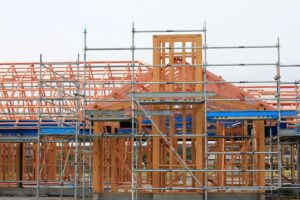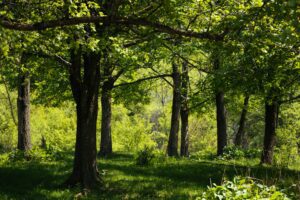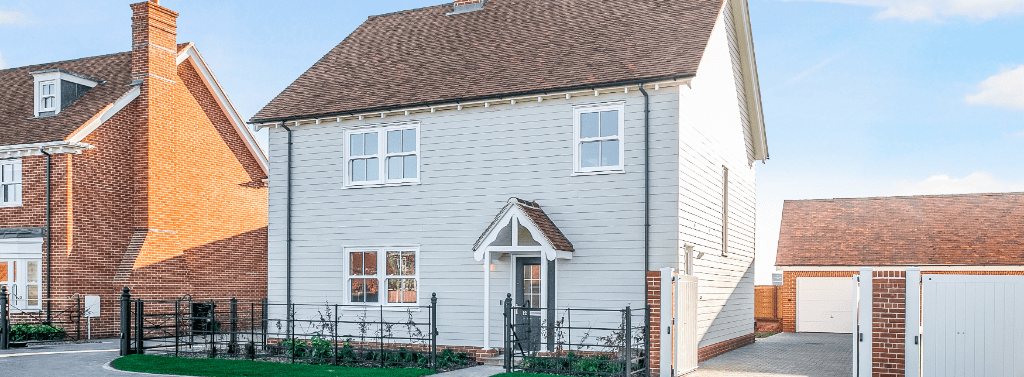Demand for timber construction is growing as housebuilders look for new ways to become more sustainable. Our Design & Planning Director, Simon Vernon-Harcourt, explains why the future is bright for timber.
As a housebuilder, we are constantly looking and exploring new modern ways to improve sustainability and minimise carbon emissions during construction. Increasingly, we are seeing a demand shift in timber construction and design across new builds.
With as little as 9% of UK’s new homes built with timber frame in 2019, the UK Government’s recent Timber in Construction Roadmap, outlining ways to support decarbonising our housing stock and increase the use of timber in construction, was very much welcomed. As a sustainable building material, timber has much to commend it. Used in the construction and design of our buildings, it can reduce embodied carbon emissions by up to 60%.
It also strengthens the UK’s green jobs drive, supports the government’s ambitious tree-planting targets, and plays a vital role in solving our housing crisis and supporting our home-grown construction industry. Timber frame houses also provide practical benefits for both homeowners and housebuilders.
A more energy efficient choice
A timber house is more energy efficient than a brick-built one. Wood can offer significant thermal insulation improvements compared to brick, and with modern insulating materials between the inner and outer layers of the walls, heat retention in timber frame houses is very high. In addition, because they use dry materials, timber frame houses suffer from minimal cracking, if any, following construction.
Some people are concerned that timber frame houses offer less protection in the event of a fire. This is not the case, as regardless of the build system – be it masonry, timber, or steel – all finished buildings must meet minimum performance levels in the event of fire. A point that is often missed is that brick-built houses still have timber floors, stairs, and roof trusses. The internal walls are often timber as well, so the only real difference is the external envelope.
There is a belief or common misconception that brick-built houses last longer, but again, this is a myth that needs to be debunked in the industry as the lifespan of a building is largely determined by the quality of construction and ongoing maintenance. Some of the oldest buildings in the UK are constructed in whole or in part from timber.
Benefits for housebuilders
If you were to compare cost on an element-by-element basis, most surveyors would state that timber frame is more expensive than traditional build. However, where housebuilders see a benefit is in the time required to build a house. A well-managed timber frame site will be completed faster and with fewer defects than one using traditional construction methods.

Never mind the weather
Timber frame construction can proceed when weather conditions would force a stop to traditional build methods. And with good project planning, completion of the external envelope can be removed from the critical path of a timber frame project, making it possible to run internal and external jobs concurrently.
A truly sustainable building material
In the journey towards net zero carbon emissions, timber frame construction is not a silver bullet solution. But it does reduce our reliance on concrete and steel, both of which are materials that release considerable quantities of atmospheric carbon during their manufacture.
Timber, on the other hand, is a truly sustainable building material. Trees remove carbon from the atmosphere and trap it within their wood as they grow, and as long as the wood does not decay and is not burned, the carbon will not re-enter the atmosphere. If the trees used for construction are then replaced with new plantings, as with our UCAS-accredited PEFC scheme, the overall process can remove carbon from the atmosphere and provide a truly sustainable build.

Now is the time to invest in timber. Not only will it support the UK’s growth roadmap but will also help to reduce emissions in our construction industry.
The future for timber is bright.
